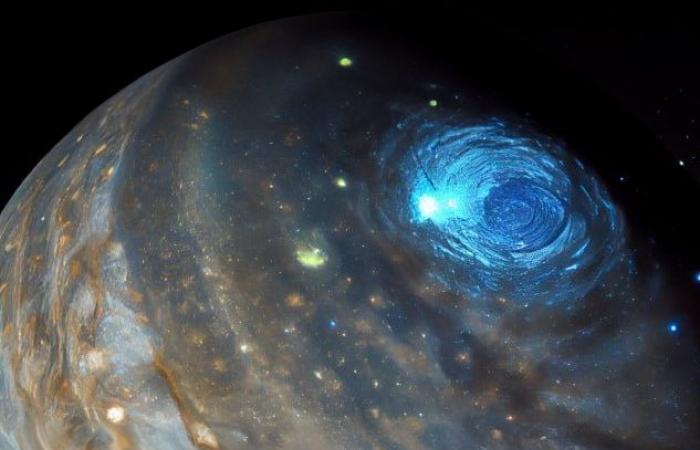Jupiter has the brightest auroras in the solar system. One of the particularities of this planet, which it shares with Saturn, is also to have auroral emissions caused by three of its largest moons: Io, Europa, and Ganymede. These distinct emissions called “auroral fingerprints” are visible locally in several wavelength domains. These are created by charged particles, mainly electrons, which propagate along the magnetic field lines connecting the moons to Jupiter. By precipitating in the atmosphere of the giant planet, these electrons induce characteristic auroras, studied since the 2000s thanks in particular to observations by the Hubble Space Telescope in the ultraviolet domain.
Since July 2016, the Juno probe has flown over the poles of Jupiter at only a few thousand kilometers altitude and thus allows a fine characterization of the structure of the auroral imprints of the moons. The combined analysis of data obtained on board Juno by the UVS spectrograph and the JADE spectrometer for which IRAP contributed to the electrostatic optical system, makes it possible to probe both the properties of these emissions but also those of the charged particles which emit them. induce.
By focusing their study on the auroral imprint of Ganymede, the largest moon in the solar system and the only one generating its own magnetic field, a team including scientists from the CNRS Terre & Univers, in close collaboration with the Juno mission teams ( SwRI, Princeton University), among other things, highlighted the influence of Ganymede’s mini-magnetosphere on its auroral imprint. They thus confirmed that the size of the flux tubes, these tubular magnetic field lines connecting the moons to Jupiter’s atmosphere and in which electromagnetic waves and charged particles propagate, is significantly larger than those reported in Io and Europe by previous studies. Observations of the auroral imprint by Juno thus provide a new method for studying the mini-magnetosphere of Ganymede, which will be explored in situ in an unprecedented way by the ESA JUICE mission currently en route to Jupiter.






